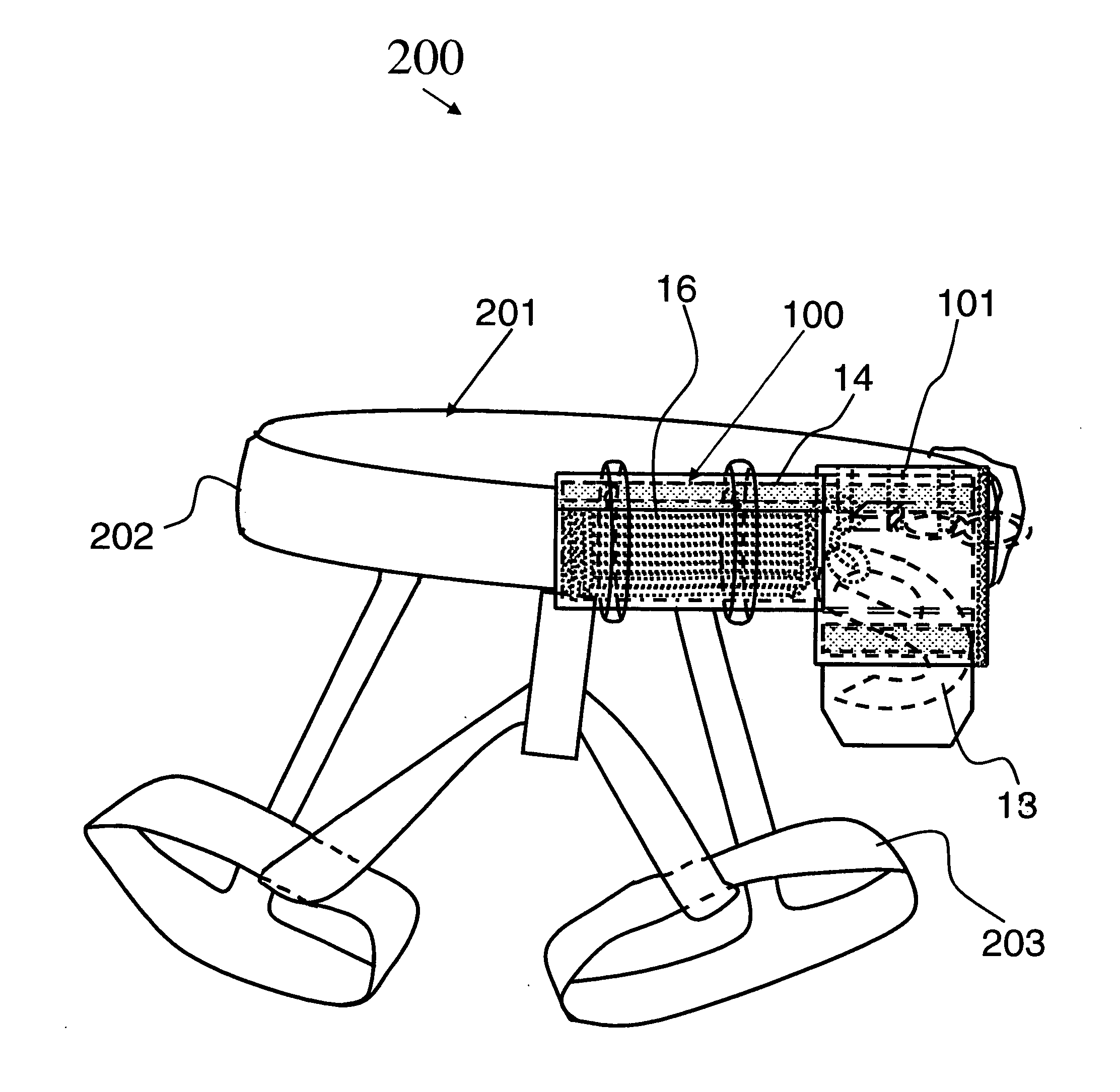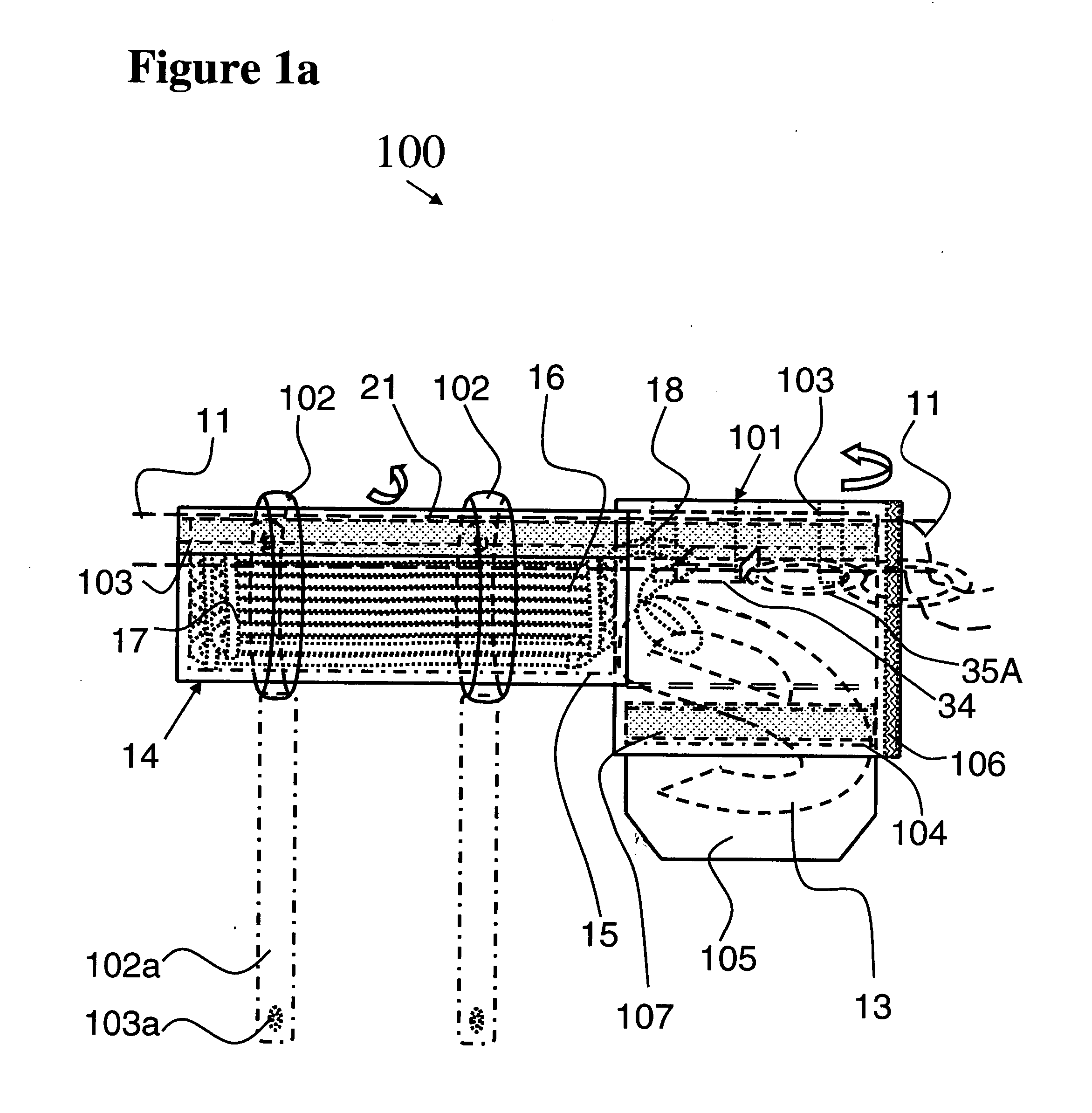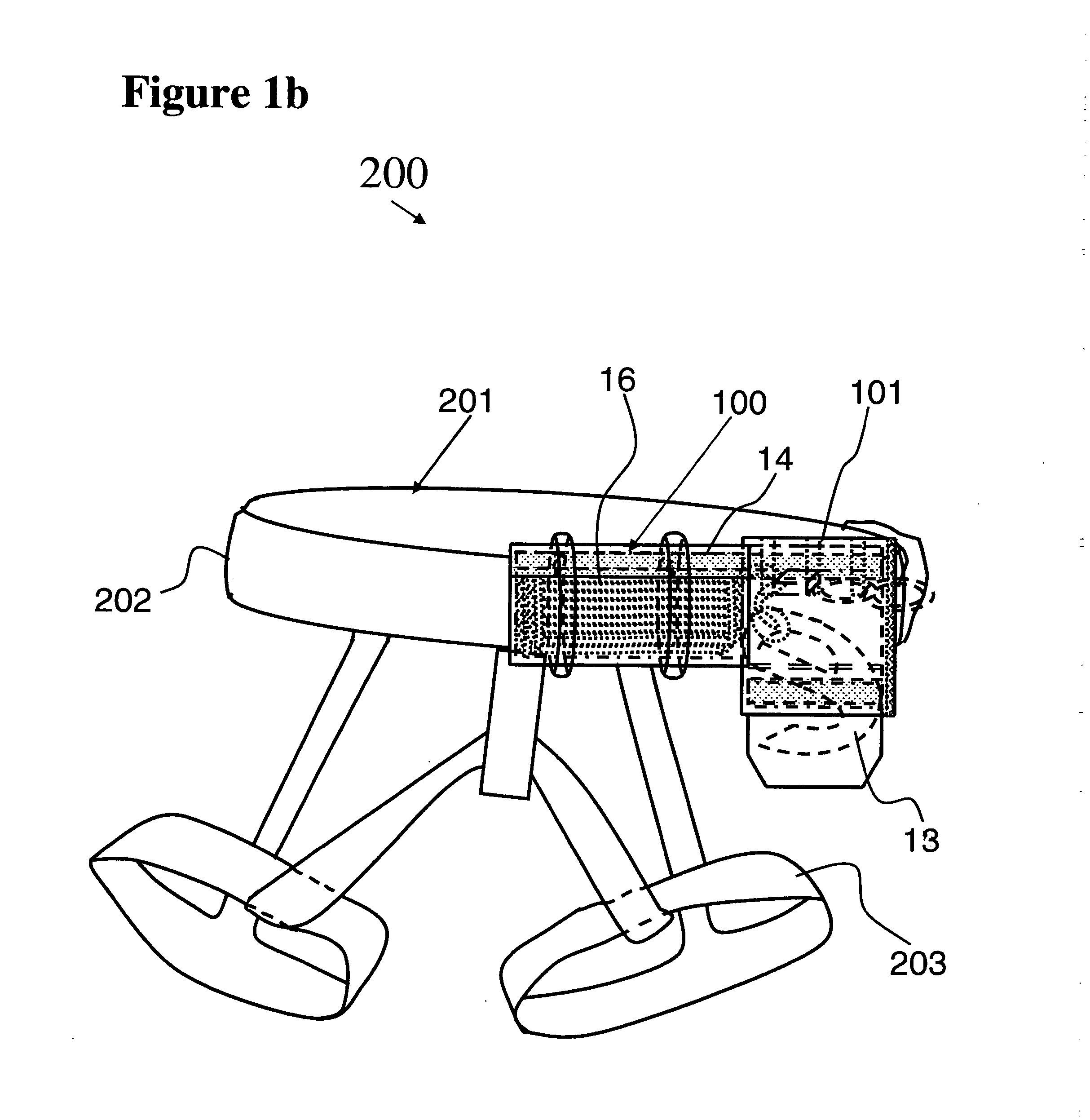Fire fighter's personal escape system
a personal escape and fire fighter technology, applied in the field of wearable personal escape systems for fire fighters, can solve the problems of preventing the free delivery of firefighters, preventing firefighters from accomplishing their work, and unable to achieve the work of firefighters wearing shoes or boots, so as to facilitate the escape distance of fifty (50) feet, high strength, and reliable and rapid escape of firefighters
- Summary
- Abstract
- Description
- Claims
- Application Information
AI Technical Summary
Benefits of technology
Problems solved by technology
Method used
Image
Examples
first embodiment
[0075]FIG. 2 illustrates an embodiment of the fire fighter's personal escape system transported by a firefighter, shown at 10. The fire fighter's personal escape system is normally set up on the right side of the fire fighter, but the system is designed to be used on either the right or left side of the fire fighter. Safety harness 11 is shown having leg portions 12. The safety apparatus of the fire fighter's personal escape system is removably attached to the harness 11 by way of attachment means, such as through a snap system, hook and eye, strap system, or the like. As shown, external or outer pouch 14 (along with internal or inner pouch 15 and rope 16) is removably attached to the waist portion of harness 11. Escape hook 13 appends off a proximal end 18 of rope 16. The belay or friction generating device is not included in this first embodiment and the fire fighter descends at the highest speed possible.
[0076]FIG. 3 illustrates the details of the fire fighter's personal escape s...
second embodiment
[0078]FIG. 5 illustrates, at 40, the fire fighter's personal escape system with a belay or friction generating element transported by a firefighter. Safety harness 11 is shown having leg portions 12 and an outer hook pouch 33 to accommodate the escape hook 13, hidden within the outer pouch. A belay or friction device 34 is attached to the safety harness 11 and outer pouch 14 using two easily detachable carabineer type fasteners 35A and 35B. The two carabineers are provided for additional safety, though one carabineer is sufficient to attach the belay or friction-generating element to the belt. The proximal end 18 of the rope 16 passes through the belay or friction device 34 limiting the rate at which the fireman descends. In an emergency, the fireman can release the fasteners 35A and 35B providing rapid decent. The safety apparatus of the fire fighter's personal escape system is removably attached to the harness 11 by way of attachment means, such as through a snap system or the lik...
PUM
 Login to View More
Login to View More Abstract
Description
Claims
Application Information
 Login to View More
Login to View More - R&D
- Intellectual Property
- Life Sciences
- Materials
- Tech Scout
- Unparalleled Data Quality
- Higher Quality Content
- 60% Fewer Hallucinations
Browse by: Latest US Patents, China's latest patents, Technical Efficacy Thesaurus, Application Domain, Technology Topic, Popular Technical Reports.
© 2025 PatSnap. All rights reserved.Legal|Privacy policy|Modern Slavery Act Transparency Statement|Sitemap|About US| Contact US: help@patsnap.com



